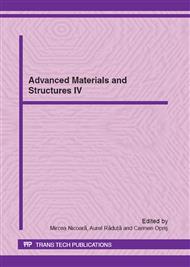p.59
p.65
p.70
p.76
p.82
p.87
p.93
p.98
p.102
3D Finite Element Analysis of Restorative Materials Used in Dental Abfractions
Abstract:
Abfractions are wedge-shaped cervical lesions which appear due to flexure of enamel and/or dentin at some location distant from the actual point of loading. The tensions may reach the fatigue limit and lead to rupture of the amelar and dentinal materials. We used the finite element method (FEM) to investigate the effect of high occlusal forces on the dental and restorative materials placed in the cervical buccal region. We developed two 3D models of maxillary premolars in order to compare the stress profiles in the buccal cervical regions under functional (20 N) and parafunctional (800 N) occlusal loads. The discretization of the tooth morphology resulted in 18889 elements and 31425 nodes. The models was subjected to occlusal analysis. The equivalent tensions (Pa) found in the buccal cervical region of the premolars at the application of parafunctional occlusal loads (800 N) are high enough to induce the breakdown of dentinal and compomer materials (over 2.41E+08 Pa). Cervical stresses induced by masticatory forces (20 N) have much lower values, which are not harmful for the dental materials. In conclusion, occlusal overload can cause damage to both the dentinal and compomer restorative materials placed in the cervical buccal region of teeth.
Info:
Periodical:
Pages:
82-86
Citation:
Online since:
May 2012
Keywords:
Price:
Сopyright:
© 2012 Trans Tech Publications Ltd. All Rights Reserved
Share:
Citation:


